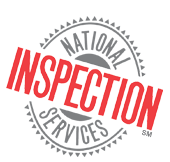Reducing Radon
It’s not as difficult (or costly) as you might think
You’ve had a radon test for your home or other building and the radon reading is high. Now what? Should you be alarmed? Should you ignore the problem? Neither. You certainly should not ignore the problem because radon, which is a radioactive gas you can’t see, smell, or taste, causes lung cancer. The Surgeon General says radon is the second leading cause of lung cancer in the United States today. (Only smoking causes more lung cancer deaths.) The EPA estimates radon causes 14,000 deaths each year in the U.S.
But you shouldn’t be alarmed, either, unless your radon reading is excessively high. Find your radon reading in the chart below to determine what action to take.
200 Pci/L or higher
(1.0 WL or higher)
Retest to confirm findings. Take immediate action to reduce radon levels. Temporary relocation may be necessary.
20-200 pCi/L
(.1-1.0 WL)
Radon exposures in this range are considered greatly above average. Retest to confirm findings, then fix your radon problem as soon as possible.
4-20 pCi/L
(.02-.1 WL)
Retest to confirm findings. Use the average measurement. This range is still above normal for homes. Take action within a few years to reduce radon levels-sooner if levels are at the upper end of this range.
2-4 pCi/L
(.01-.02 WL)
Look into fixing your home’s radon problem, although the EPA considers this range relatively safe.
(
Although radon exposures in this range does present a small lung cancer risk, reducing them further is difficult. Retest every few years to ensure conditions haven’t changed.
The average indoor radon level across the U.S. is estimated to be about 1.3 pCi/L, and about .4 pCi/L of radon is normally found in the outside air. Congress has set a long-term goal that indoor radon levels be no more than outdoor levels. While this goal isn’t achievable in all cases, most building radon levels can be reduced to 2 pCi/L or less.
How to reduce your building’s radon level
For most homes and buildings, radon reduction measures are no more expensive than having a new hot water heater installed or having the house painted. The cost for a radon reduction contractor to fix a home generally ranges from $500 to $2500, depending on the characteristics of the house and choice of radon reduction methods.
Your house foundation type will affect the kind of radon reduction system that will work best. Basement, slab-on-grade and crawlspace homes all require different methods. There are two main types of radon reduction techniques.
Soil Suction
Prevents radon from entering your home by drawing the radon from below the house and venting it through a pipe to the air above the house. This method can be one of five types: subslab suction, drain tile suction, sump hole suction, block wall suction or submembrane depressurization.
Ventilation
In houses with crawlspaces, radon levels can sometimes be lowered by passively or actively ventilating the crawlspace.
Sealing cracks and other openings in the foundation also help reduce radon build up, but sealing alone does not reduce radon levels significantly or consistently.
Hiring the right contractor
- Talk to qualified contractor
The EPA recommends you have qualified contractors fix your radon problem because lowering high radon levels requires specific technical knowledge and special skills. Consider only graduates of the EPA’s Radon Contractor Proficiency (RPC) Program, which requires contractors to take training courses and pass exam. - Get estimates Choose a contractor to fix a radon problem just as you would choose someone to do other home repair. It is wise to get more than one estimate, to ask for references and to contact some of those references to ask if they are satisfied with the contractors work. Once you have several estimates, consider what you will get for your money. The cheapest system may not be the best over the long run.
- Sign a contract
Ask the contractor to prepare a contract before any work starts. Carefully read the contract before you sign it. The contract should describe exactly what work will be done prior to and during the installation of the system, what the system will consist of and how the system will operate. Carefully consider options to your contract that may add to the initial expense of the system but may be worth it. Typical options include guarantee that the contractor will adjust or modify the system to reach the promise radon level and/or an extended warranty or service plan.
